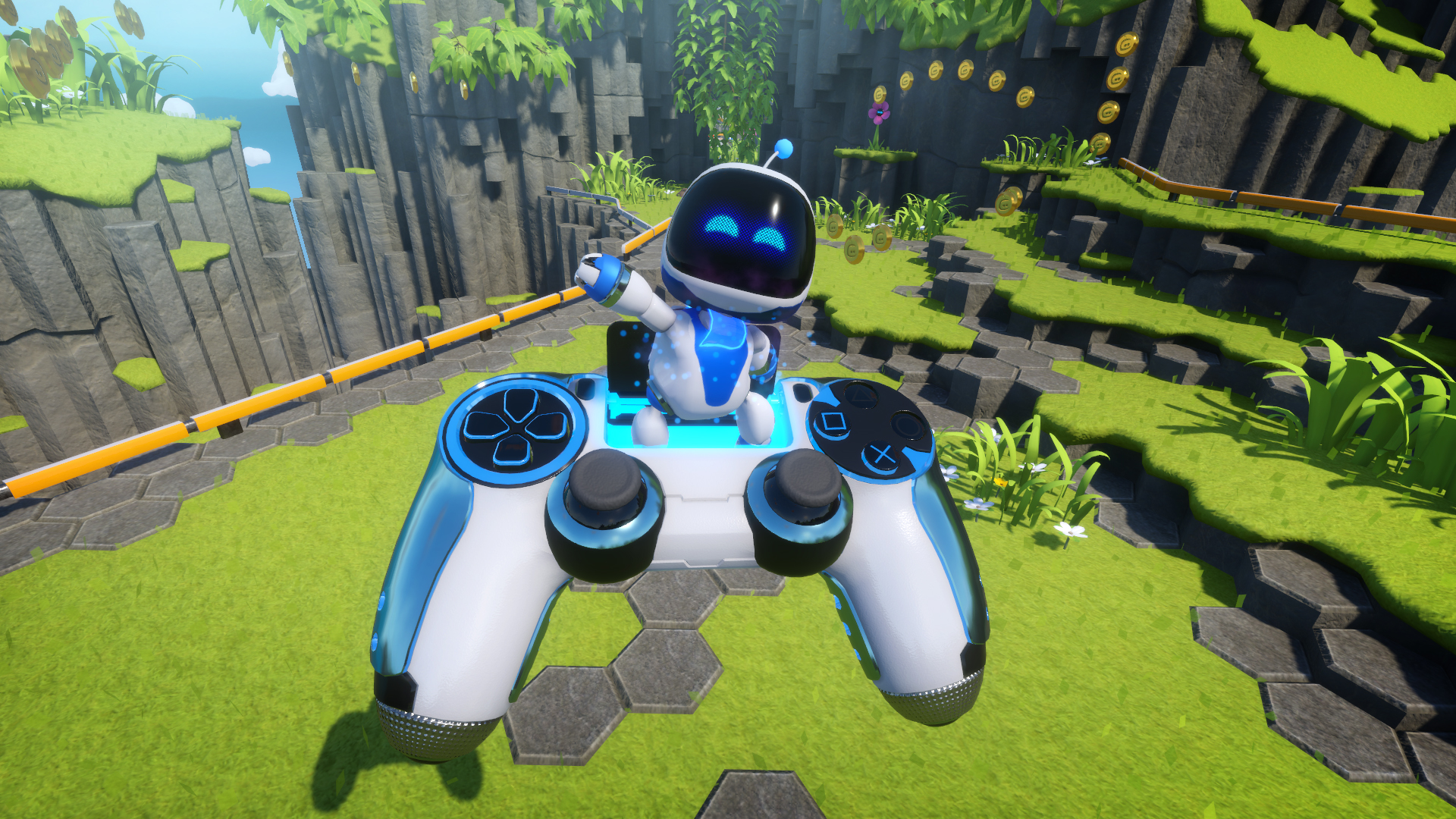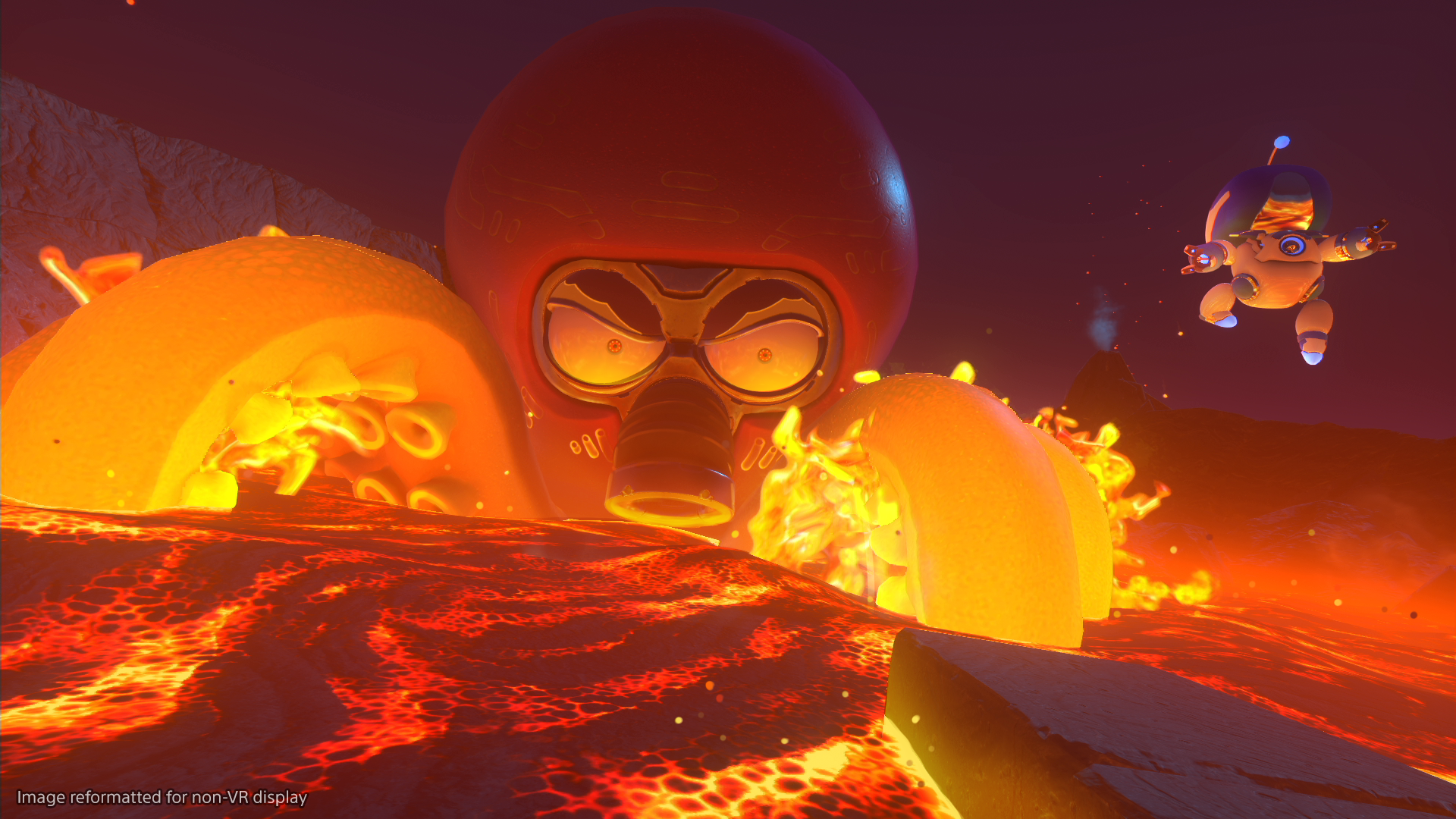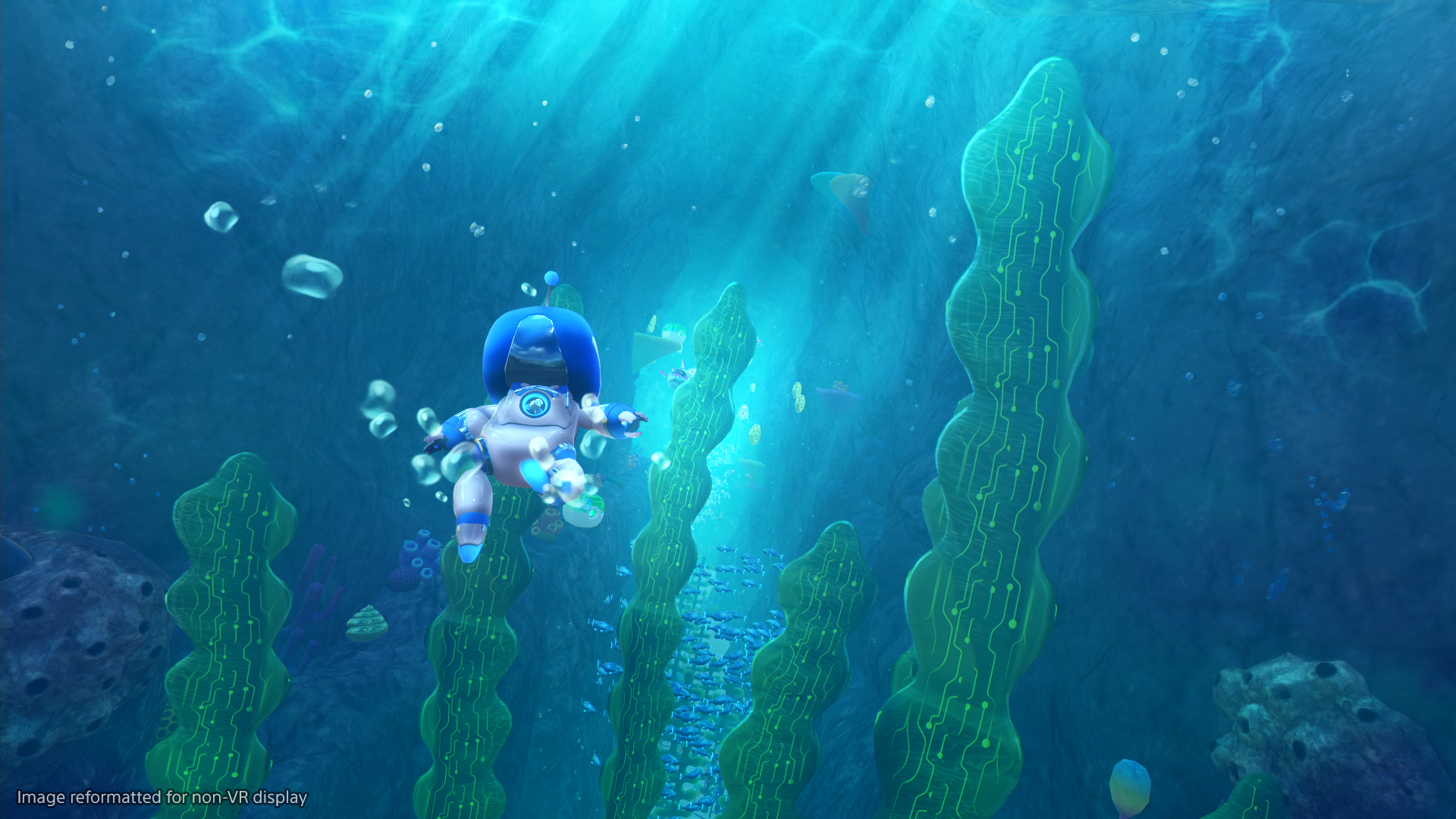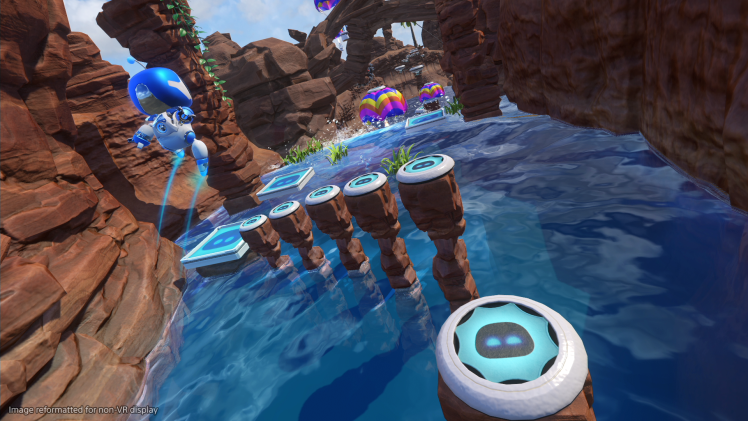When virtual reality is at its absolute best, it’s magical — a chance to put on glasses that instantly transport you to another world. That’s why so many VR games use a first-person perspective to let you look through your character’s eyes. But some developers are instead using VR to make third-person games more compelling.
That’s what Sony’s Japan Studio is doing with Astro Bot: Rescue Mission for PlayStation VR, which brings all of Sony’s VR experience to bear on a Super Mario Odyssey-style 3D platforming experience. Displayed on a TV screen, Astro Bot looks like a more charming version of Pixar’s WALL-E, but through the PSVR headset, it’s like being inside a living diorama, complete with the ability to tilt your head and view the action in stereoscopic 3D.
I was excited to have the opportunity to interview Astro Bot’s creative director, Nicolas Doucet, to discuss how Sony’s ASOBI! Team evolved a charming 10-minute demo from The Playroom VR into a full-fledged game. Here’s an edited transcript of our Q&A.

Above: The 10-minute Playroom VR demo Robot Rescue evolved into the full game Astro Bot.
GamesBeat: The Playroom VR version of Astro Bot, called Robot Rescue, seemed surprisingly lush and realized for a small demo — as if you had been working on polishing the concepts for a long while. Could you walk us through the backstory of how you built Robot Rescue, then decided to expand it into a full game?
Nicolas Doucet: Robot Rescue was one of the many prototypes we created while putting Playroom VR together, but it only got a very small amount of time in fact. We gave priority to the party games, as we wanted to demonstrate that combining TV and VR could make fun social interactions.
So our “platformer” prototype as we called it, was left to the very last four months on the project and we put it together quite rapidly, with a team of five or six members at most, while others worked on finishing other mini games in The Playroom VR.
The reason we put it in was because even for us, there was a clear appeal to bringing the platforming genre to PSVR, and piggy-backing on our experience with the DualShock 4, we could also bring in innovative gameplay like the gadgets. The idea was that if it proved to be popular, we might work on a bigger version. It was only after Playroom VR came out and reviews started coming in that we got confirmation of the popularity of Robot Rescue.
Then it was an easy decision to get Astro Bot going. Very early on, we decided that we would not create a copy and paste of Robot Rescue. While Robot Rescue was a great 10-minute wonder, we had to be really careful to give the same joy to users throughout a longer game.
And so we went back into prototyping, looking for many new gameplay ideas, better use of VR, new gadgets, and bigger VR moments so that every stage could have a unique feel. I hope that’s what we achieved with Astro Bot: Rescue Mission.

Above: Astro Bot spends 80 percent of its time in third-person perspective, but dips into first-person scenes on occasion.
GamesBeat: Some have suggested that VR is best for first-person experiences, but you’re one of a handful of developers that have used stereoscopic 3D to make a more engrossing third-person platforming experience. What tech tricks did you use to make this possible?
Doucet: Like many developers getting into VR, we also assumed that VR would work best for first-person experiences. As we prototyped gameplay mechanics for The Playroom VR, we still had room to experiment with character interactions, and were curious to see how VR could be utilized to create unique moments. More than tech tricks per se, we started seeing opportunities for innovation.
First, there is an instant emotional connection possible with a character looking back at you, creating the feeling that you two share the same world and have mutual awareness. That’s extremely powerful in VR so we injected a lot of it in.

Above: Seen through PSVR, your nearby character’s proximity gives you a sense of togetherness.
Playing around with level design, we also realized that controlling a character from under or from above created thrilling moments and so the idea of strong vertical gameplay grew on us. In VR, looking up and down is so natural that it made these parts much easier than on a traditional TV game.
Perspective play became a great finding. Being able to lean only a few inches sideways to see a new platform that was previously inaccessible added a touch that really suited the platforming genre. We made this a “must” going forward.
The proximity of the characters seemed to be instantly appealing, too. It is also a chance to feel “together,” see details, and give the world a true tangibility, which later became a key art factor for the project.

Above: At some points, a tiny Astro Bot moves within overwhelming backdrops, providing a different sense of scale.
Finally, placing a third-person character in his world means that we have to handle two scales: his and yours. This is why we end up with some small enemies which are threats to Astro and bigger ones that attack the VR player directly. While this duality was sometimes difficult to balance, it was also a source of flexibility: not everything had to be to perfect scale to make sense in that world and so we could liberate ourselves from the constraints of real world limitations that some VR games have to follow for realism.
These were all really new. On top of them, we still created some first-person interactions — via the player head to smash the environment or the Dual Shock 4’s many gadgets — so that the VR headset-wearing player has a central role to play, too. Combining all of these gave us a rich tool set to make a VR experience different to most others.
In the end, we settled for a game based 80 percent on controlling a character, and punctuated with first-person interactions here and there where it made most sense. Getting that balance right took some time as it affects the overall game tempo.

Above: Astro Bot uses different camera tricks to bring you up close to your character — and enemies — at times, and further away at others.
GamesBeat: How does VR change the Astro Bot game experience for players, versus what they might have on a traditional TV screen?
Doucet: Here is some innovative gameplay we focus on:
- “Vertical and Lateral Play,” plus a few moments of full “360 Play.”
- “Proximity Play” to create those close-up moments.
- “Far-Play” where the depth perception of PSVR still allows precise platforming.
- “Perspective Play” where tilting your head to discover a path becomes essential.
- “Physical Play” using the player’s body to smash scenery and to avoid incoming attacks.
- “Gadget Play” with the DualShock 4 appearing on-screen to dispense gadgets, including a hook shot, slingshot, and shuriken.
GamesBeat: What extra benefits can PS4 Pro users expect, if any?
Doucet: We went for added graphical quality since the game already runs at 120 FPS on normal PS4 — 60FPS re-projected. On PS4 Pro, the game looks sharper, with more details visible.

Above: Though this scene looks familiar from Robot Rescue, showing you accessing your DualShock 4 as a gadget container, the increased lushness and details are the result of Astro Boy’s deeper development.
GamesBeat: What’s next for your team after Astro Bot?
Doucet: Once Astro Bot: Rescue Mission is complete, we shall sit back a bit, relax, and study carefully the way players are reacting to the game. Whatever ASOBI! Team does next, it will once again reflect our core pillars: “Magical, Innovative, Playful, and Inclusive.”
Sony’s Japan Studio is currently working on finalizing Astro Bot, and the final release date is not yet known. From what we gather, it’s likely to launch exclusively for the PlayStation VR without TV support, which is entirely reasonable: This may well be the title that sells PlayStation owners on buying PSVR hardware. We’re keeping our fingers crossed for a 2018 release.

